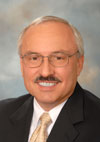Multiple-choice quiz (no looking at the next paragraph now…)
Question: The drop in crime was accredited to:
A. Significant investment in video surveillance technology
B. Significant investment in access control technology
C. Drexel University’s investment in a proprietary police force
D. Significant investment in communications technology
E. The City of Brotherly Love getting serious about its tagline
If you answered “C” you are correct. But it got me to thinking about the great forecasts of a few years back when video and related security technology would eliminate our need for security officers. Many video system promotions state, “reduce guard staffing” as a benefit or goal. Was it ever that simple? Just replace the contract guards with a dedicated police force to ensure the security of your stakeholders?
Being consistently inquisitive and hungry, I gathered the key players to ask for the story behind the headlines that make University City an oasis of safety within the sixth largest city in the U.S.
I was fortunate to gather the leaders behind the current infrastructure and strategy for safety and security, including:
• Maureen Rush, vice president, Public Safety, University of Pennsylvania
• Dominic Ceccanecchio, senior associate vice president, Drexel University
• Ronald Rabena, division president, Allied Barton
• John Nemerofsky, corporate vice president, Niscayah, who is former president of SST and who developed many of the University City security systems in that role. SST is now a part of ADT.
While Drexel’s investment in a proprietary police force, including 27 officers with full police powers grabbed the headlines, the conversation focused on strategy, best practices and communication as the keys to success.

Maureen:
“Our business is not law enforcement, it is higher education. Every CSO needs to understand the business they work for and service, it is never security or law enforcement. That approach doesn’t add value, it fails. The question is important and still being debated: What is ROI? Well, the smarter we get the more we realize, that ROI is not really just dollars and cents. It is also about protecting the brand and asking our stakeholders if they feel safe and secure.One way to measure is to put everything up against crime statistics and we do that. The metrics show performance against specific risks and where we stand to get additional benefits by investing more in security people, training and technology.”

Dominic:
“Communication has been key to our success and will continue to be. We are sharing information with the other schools and their police forces via a Multi-Agency Emergency Radio Network dubbed MERN. We participate in an information network with the FBI, Philadelphia Police, Fire and EOCs. We all receive 911 information immediately and our officers can respond. The University City District Public Safety Advisory Board meets monthly and includes the district attorney, Amtrak, Septa (city mass transit) to discuss common problems and solutions. Further, we are engaging parents, students, faculty, staff and the surrounding community to proactively participate in their safety. Out of this work, we identify best practices and are able to blend technology and law enforcement with our stakeholders’ needs.”
Ronald:
“The communication on goals and expected outcomes is critical for us to provide the services effectively. I am very impressed at the meetings I get invited to attend and to see that the universities are represented at police, fire and emergency operations center meetings. Similarly, these organizations are proactive and send their representatives to the university’s meetings. This ensures successful communication and coordination which sets strategy on how to work together. I believe that solid communication is what drives prevention.”
John:
“A benefit of our partnership is that we have metrics on applied best practices including technology and officers. The metrics show what is possible to achieve by applying best practices and we can share that with lower performing organizations to improve their efficiency and results.”Dominic:
“At Penn and now Drexel, we went outside the box to identify best practices and benchmarked other schools.”Ronald:
“So why haven’t contract security officers and companies like Allied Barton disappeared? I think there are two reasons. First, the value-add they bring to the organization. They are now also serving as ambassadors, greeters and profilers. They are often the first person a visitor meets and represent the brand. It is a best practice is to engage visitors at the entrance. Second, people want to see a visible presence when it comes to their safety or security, especially with parents who have their children at a University.”Dominic:
“The role really has expanded for security to include fire, life safety, emergency preparedness and community involvement. All of that increases security and reduces risk through communication and identifying best practices.”Maureen:
“No one thing prevents or reduces crime. And no one thing gives a sense of safety and security to your stakeholders. Qualitative surveys are needed to gauge that people feel secure. It is a mistake to only look at the crime statistics. We need to recognize the ebb and flow of events over the long-term with the goal being to build a successful program in which the enterprise and its stakeholders are confident. The outcome is that there will always be events, but one event is seen as an aberration and not a chronic issue. That protects the brand.”John:
“That is the approach we took with technology when we partnered AB and University City. First, focus on creating a safe and secure environment with brand in mind. Second, invest to create efficiencies and leverage technology. Third, identify the training needed across all stakeholders, so they can participate in their own security. And fourth, measure and look at the results to continuously improve the program.So, the guards or officers have not disappeared. In sourcing is now complimenting the past mass outsourcing with skill specialization to leverage technology by both the security team and those they seek to secure (people) with proven processes (best practices) and powerful, fluid communication networks. This is driving brand equity, creating positive measurable results, reducing risk and preventing crime.”
This is also an outstanding example of great partnerships and hard work by some of the smartest people in our business. And answers A, B and C combined are the most accurate reasons for achieving these results. Choice D, however, in the city that just traded away Donovan McNabb, well…not so much.